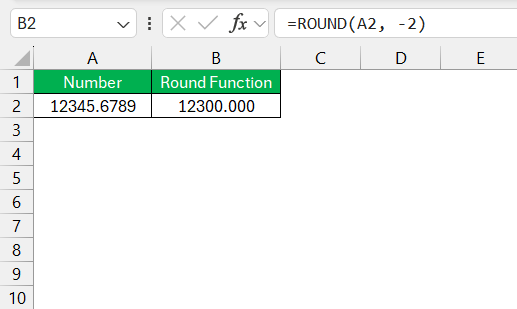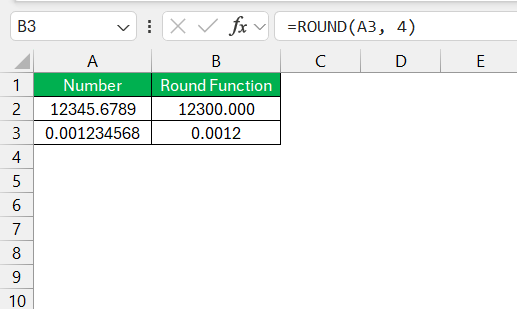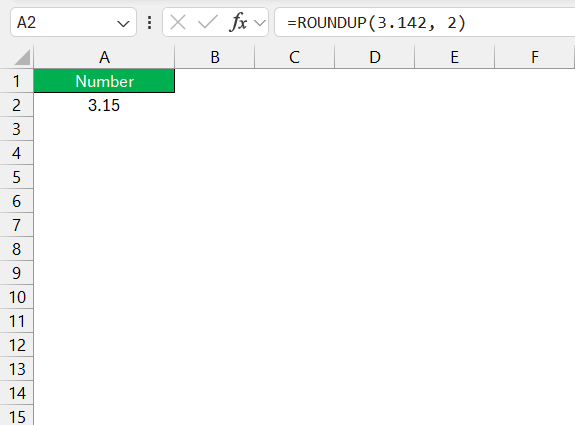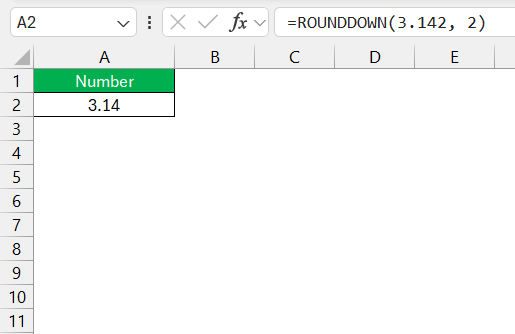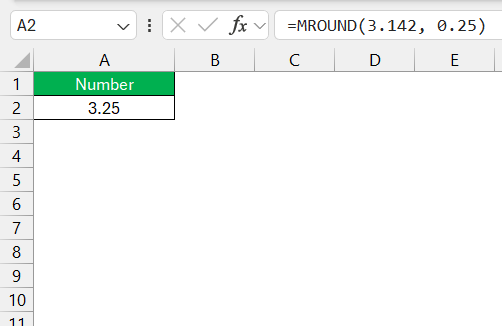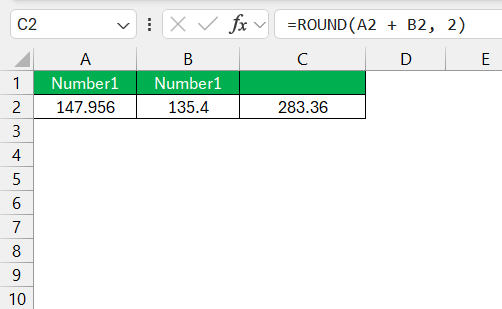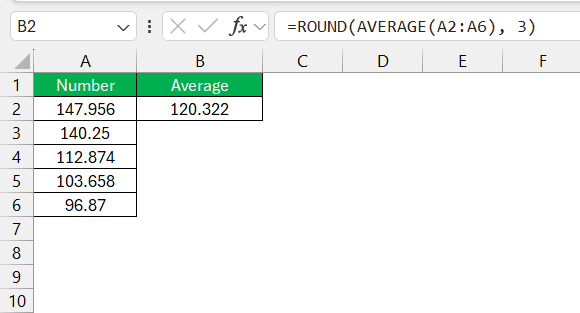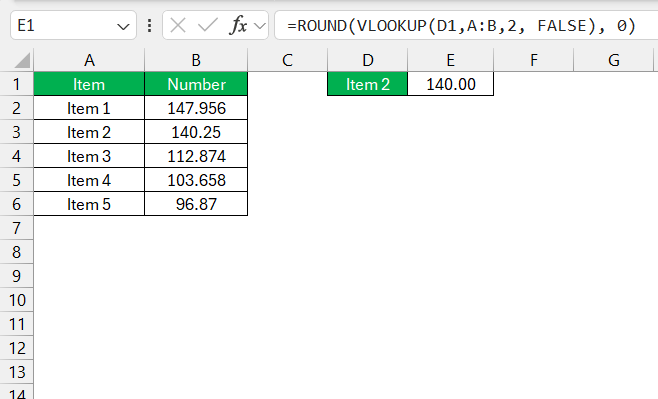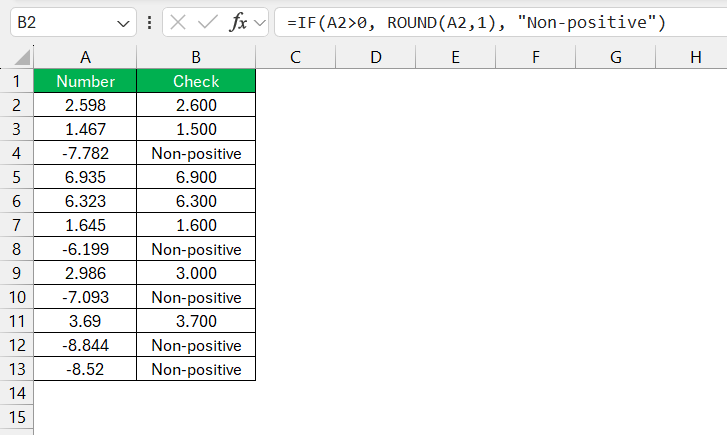Rounding numbers to N significant digits in Excel is essential for precise data analysis and reporting. This process ensures that your numerical data maintains a specified level of accuracy, particularly important in scientific, financial, and engineering contexts. Excel provides functions such as ROUND, ROUNDUP, and ROUNDDOWN, which can be tailored to round numbers to n significant digits efficiently. Mastering these functions enhances the clarity and reliability of your data presentations.
Key Takeaways:
- Rounding numbers in Excel is crucial for accurate data analysis and reporting.
- Significant digits ensure numerical precision, vital in scientific, financial, and engineering contexts.
- Excel functions like ROUND, ROUNDUP, and ROUNDDOWN help achieve the desired rounding efficiently.
- Mastering these functions improves data clarity and reliability.
- Practical examples and alternative rounding functions provide flexibility for various rounding needs.
Table of Contents
Introduction to Rounding in Excel
The Importance of Precision in Data Analysis
When it comes to data analysis, precision is everything. In my experience, improper representation of data through inaccurate rounding can lead to misguided insights and, ultimately, incorrect decisions. This is why rounding numeric values in Excel is a fundamental skill for anyone dealing with data. It’s all about maintaining the integrity of the data while also presenting it clearly and accessible.
Understanding Significant Digits in Excel
Significant digits or significant figures play a critical role in determining the precision of numerical values. In Excel, comprehending the concept of significant digits is vital for maintaining the precision of calculations and ensuring accurate data interpretation. Expressing a number with the correct number of significant digits reflects the level of certainty or accuracy of that number.
It’s essential for all of us working in disciplines such as science, engineering, or finance to grasp this concept to communicate data with the intended level of precision. Excel, although not originally designed as a scientific tool, does respect significant digits up to a large number, but I often find it requires a bit of finesse to control this aspect accurately in worksheets.
Mastering the Round Function
Syntax and Parameters for ROUND Function
The ROUND function in Excel is straightforward but powerful, with its operation hinging on two main parameters. The syntax for the ROUND function is =ROUND(number, num_digits), where number is the value you want to round and num_digits specifies the number of digits to which you want to round the number.
If num_digits is greater than 0, the number is rounded to the specified number of decimal places. If num_digits is 0, the function rounds to the nearest whole number. If num_digits is less than 0, rounding occurs to the left of the decimal point — impacting tens, hundreds, thousands, and so on. It’s a function I find indispensable for preparing financial reports or cleaning up user input data, among other tasks.
Round Numbers to N Significant Digits – Practical Examples
Applying the ROUND function to achieve rounding to a specific number of significant digits can be slightly tricky because it’s not just about decimal places — it’s also about the scale of the number. Here’s how I like to tackle it:
- To round a large number like 12345.6789 to three significant digits, first I must identify the significant digits — in this case, 123. Then I use the ROUND function paired with a little math:
=ROUND(12345.6789, -2)to effectively round to the nearest hundred, giving me 12300.
- For a smaller number like 0.00123456789 and rounding to two significant digits, identify the significant digits (12 in this situation), and use the ROUND function like this:
=ROUND(0.00123456789, 4), to round to the four decimal places where the second significant digit is, resulting in 0.0012.
Remember, the key is to determine the position of the desired last significant digit relative to the decimal point and then use that as your num_digits parameter.
Alternative Rounding Functions and When to Use Them
Differences Between ROUNDUP, ROUNDDOWN, and MROUND Functions
The differences between ROUNDUP, ROUNDDOWN, and MROUND in Excel are subtle, yet they can have a significant impact on your results depending on the context.
ROUNDUP function, as the name suggests, always rounds numbers away from zero, meaning 3.142 becomes 3.15 when rounded to two decimal places using =ROUNDUP(3.142, 2). It’s particularly useful when calculating maximum budgets or conservative estimates.
ROUNDDOWN does the opposite — it rounds numbers towards zero. So, =ROUNDDOWN(3.142, 2) will yield 3.14. This function comes in handy when we need to remain within certain limits, like avoiding overdrawing an account.
Lastly, the MROUND function rounds a number to its nearest specified multiple. Suppose I want to round a number to the nearest quarter, =MROUND(3.142, 0.25) converting 3.142 to 3.25. It’s quite beneficial in scenarios where quantities must adhere to standardized increments, such as packaging sizes or stock units.
While ROUNDUP and ROUNDDOWN are about precision at decimal places, MROUND is about aligning numbers with practical usage or standards. Understanding when to utilize each of these greatly enhances my efficiency in financial modeling and inventory management.
Advanced Techniques: Using ROUND with Other Excel Functions
Using the ROUND function in conjunction with other Excel functions can refine the data analysis, ensuring precision across complex calculations. Here are some advanced techniques that I regularly use:
- Combining with Arithmetic Operations: If I’m interested in the rounded sum of two cells
A1andB1, I’d nest their sum within the ROUND function like so:=ROUND(A1 + B1, 2). This ensures the final sum is rounded to two decimal places.
- Incorporated into Formulas: I often integrate ROUND within more complex formulas. For example, to round the average of a range of cells
A2:A6, I would use=ROUND(AVERAGE(A2:A6), 3)to get a result rounded to three decimal places.
- Nested with Lookup Functions: When retrieving data with a VLOOKUP function, to round the returned value to the nearest whole number, I nest the rounding function like this:
=ROUND(VLOOKUP(value, table, index_number, FALSE), 0).
- Used with Conditional Statements: In decision-making models, I use ROUND alongside IF statements. For example,
=IF(A1>0, ROUND(A1,1), "Non-positive")would round any positive number in A1 to one decimal place or return “Non-positive” otherwise.
By employing these techniques, I can tailor the rounding to specific parts of the formula, keeping some calculations precise while rounding only where it’s necessary, which is crucial for complex financial models or statistical data.
FAQs on Rounding Numbers in Excel
What is the formula for Roundup in Excel?
The formula for the ROUNDUP function in Excel is =ROUNDUP(number, num_digits). Use this function when you need to round a number up to a specific number of decimal places. The number is the value you want to round up and num_digits specifies the number of digits to which you wish to round. If num_digits is 0, the function will round up to the nearest whole number.
How Do I Round to the Nearest Major Unit in Excel?
To round to the nearest major unit like thousands, hundreds, or tens in Excel, use the ROUND function and apply a negative number for num_digits. For example, =ROUND(A1, -3) rounds the number in cell A1 to the nearest thousand, =ROUND(A1, -2) to the nearest hundred, and =ROUND(A1, -1) to the nearest ten. The negative digit count moves the rounding operation to the left of the decimal.
Can I Automatically Round All Numbers in a Column to N Significant Digits?
Yes, you can round all numbers in a column to a set number of significant digits automatically. The formula incorporates the ROUND function alongside other functions for precision. Copy =ROUND(B1, N-(1+INT(LOG10(ABS(B1))))) down the column, replacing B1 with the cell where your data starts and N with the desired number of significant digits. This will adjust each number in the column to reflect N significant digits.
What’s the Difference Between Rounding and Truncating Numbers in Excel?
Rounding in Excel adjusts a number to the nearest specified value, whereas truncating, using the TRUNC function, simply cuts off digits without rounding, regardless of the digits’ value. When I round a number, it increases or decreases to align with the chosen level of precision, while truncation just removes the excess digits beyond the specified decimal place without altering the remaining number.
How Do I Ensure that Rounding Does Not Affect My Sum Totals?
To ensure that rounding does not impact your sum totals, perform rounding after summing up the raw numbers. Use the ROUND function on the total rather than on individual entries. If you round each number before adding, the small discrepancies can lead to an inaccurate total. By summing first and then rounding, =ROUND(SUM(A1:A10), 2) for instance, you maintain the precision in calculation and apply rounding only to the final displayed total.
John Michaloudis is a former accountant and finance analyst at General Electric, a Microsoft MVP since 2020, an Amazon #1 bestselling author of 4 Microsoft Excel books and teacher of Microsoft Excel & Office over at his flagship MyExcelOnline Academy Online Course.

